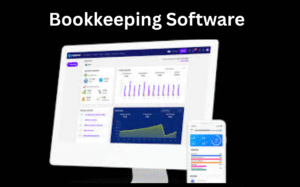Navigating the complex world of business taxes can be daunting, but understanding R&D tax credits could offer a significant financial boost to your company. These credits are designed to encourage innovation by rewarding businesses that invest in research and development, providing a valuable opportunity for cost savings.
Whether you’re a small startup or a large corporation, taking advantage of these incentives can help you reinvest in your company’s growth and future projects. This guide will break down the essentials of R&D tax credits, including what qualifies for these benefits and how they can apply to your business operations. Get ready to learn how these tax credits can potentially transform your financial strategy and support your company’s goals. For more detailed information on R&D tax credits and deductions, you can refer to this comprehensive resource.
Understanding R&D Tax Credits
R&D tax credits are a valuable tool for businesses investing in innovation. This section will explain what these credits are, their benefits, and clear up common misunderstandings.
Definition of R&D Tax Credits
R&D tax credits are government incentives designed to encourage companies to invest in research and development. These credits reduce a company’s tax liability based on qualifying R&D expenses.
The R&D tax credit applies to a wide range of industries, not just scientific or technological fields. It rewards companies for taking risks and pushing boundaries in their respective sectors.
Businesses can claim these credits for activities such as developing new products, improving existing ones, or creating new processes. The goal is to stimulate innovation and keep businesses competitive in the global market.
Key Benefits for Businesses
R&D tax credits offer several advantages to businesses of all sizes. They can significantly reduce tax burdens, freeing up capital for further investment and growth.
For startups and small businesses, these credits can be especially valuable. They can offset payroll taxes, providing immediate cash flow benefits even if the company isn’t yet profitable.
Large corporations also benefit, as R&D credits can substantially lower their effective tax rates. This allows them to continue funding large-scale research projects and maintain their competitive edge.
Common Misconceptions
Many businesses mistakenly believe R&D tax credits are only for large tech companies or scientific research. This is not true. Companies in various industries can qualify, including manufacturing, software, and even food production.
Another misconception is that R&D activities must be successful to qualify. In reality, the credit rewards the attempt at innovation, not just successful outcomes. Failed experiments or projects can still be eligible.
Some firms think the process is too complex or time-consuming. While it does require careful documentation, the potential benefits often outweigh the effort involved. Professional guidance can simplify the process significantly.
Eligibility for R&D Tax Credits
Understanding eligibility is crucial for businesses considering R&D tax credits. This section outlines qualifying activities, provides industry-specific examples, and explains documentation requirements.
Qualifying Activities
Qualifying activities for R&D tax credits must meet specific criteria set by tax authorities. These typically involve creating new products, processes, or software, or improving existing ones.
The work must involve overcoming technical uncertainties and use a systematic approach to experimentation. It’s not just about the end result, but the process of discovery and problem-solving.
Activities can include designing prototypes, developing new manufacturing processes, or creating innovative software algorithms. The key is that the work pushes beyond current knowledge or capabilities in the field.
Industry-Specific Examples
R&D tax credits apply across various industries. Here are some examples:
- Manufacturing: Developing new materials or improving production processes.
- Software: Creating new applications or enhancing existing software systems.
- Healthcare: Designing medical devices or improving treatment methods.
- Agriculture: Developing crop resistance or creating more efficient farming techniques.
- Energy: Researching renewable energy sources or improving energy efficiency.
These examples show the broad applicability of R&D credits across different sectors.
Documentation Requirements
Proper documentation is crucial for successful R&D tax credit claims. Businesses need to maintain detailed records of their qualifying activities and associated expenses.
Key documents include project plans, progress reports, test results, and payroll records for employees involved in R&D activities. It’s important to clearly link these documents to specific R&D projects.
Financial records should clearly separate R&D expenses from other business costs. This includes materials, equipment, and staff time dedicated to R&D activities.
Calculating Your R&D Tax Credit
Calculating R&D tax credits involves several steps and considerations. This section will guide you through the process, highlight important factors, and explain how to use payroll tax credits.
Steps to Determine Credit Amount
- Identify qualifying R&D activities within your business.
- Calculate the qualified research expenses (QREs) associated with these activities.
- Choose between the Regular Credit Method and the Alternative Simplified Credit (ASC) method.
- Apply the appropriate credit rate to your QREs.
- Adjust for any limitations or restrictions based on your business size and tax situation.
Important Calculation Factors
Several factors can affect your R&D tax credit calculation. The base amount of research expenses from previous years is crucial, especially for the Regular Credit Method.
The type of expenses also matters. Wages for employees directly involved in R&D typically make up the largest portion of QREs. Supplies and contract research expenses are also included, but with certain limitations.
Your company’s gross receipts and whether you’re a startup or established business can impact the calculation. Some businesses may face credit limitations based on their overall tax liability.
Utilizing Payroll Tax Credits
Certain small businesses and startups can use R&D credits to offset payroll taxes. This is particularly beneficial for companies not yet profitable enough to owe income tax.
To qualify, a company must have gross receipts of less than $5 million for the credit year and no gross receipts for any tax year before the 5-tax-year period ending with the credit year.
The maximum amount that can be applied against payroll taxes is $250,000 annually. This credit is applied to the employer portion of social security taxes on a quarterly basis.
Applying for R&D Tax Credits
Applying for R&D tax credits requires careful preparation and attention to detail. This section covers the application process, submission procedures, and common pitfalls to avoid.
Preparing Your Application
Preparing an R&D tax credit application involves gathering comprehensive documentation of your research activities. Start by reviewing all potential qualifying projects from the tax year.
Collect detailed records of expenses related to these projects, including employee time sheets, material costs, and contractor invoices. Organize this information in a clear, logical manner.
Prepare a technical narrative for each project, explaining how it meets the criteria for R&D activities. This should include the technical challenges faced and the systematic approach used to overcome them.
Navigating the Submission Process
The submission process for R&D tax credits typically involves including the credit calculation with your business tax return. Use Form 6765 for federal R&D tax credits in the United States.
Ensure all supporting documentation is readily available, though it’s not typically submitted with the initial claim. Be prepared for potential questions or audits from tax authorities.
Consider seeking professional help from tax specialists or R&D credit experts. They can guide you through the process and help maximize your claim while ensuring compliance.
Common Application Mistakes
One common mistake is failing to identify all eligible activities. Many businesses underestimate the scope of what qualifies as R&D. Review all departments for potential qualifying work.
Another error is poor documentation. Lack of detailed records can lead to reduced credits or rejected claims. Maintain thorough, contemporaneous documentation of all R&D activities and expenses.
Some companies miscalculate their credit by using the wrong method or including ineligible expenses. Carefully review the calculation rules and consider professional assistance to avoid these errors.
Future of R&D Tax Credits
The landscape of R&D tax credits is evolving. This section examines upcoming changes, their impact on business strategies, and how to plan for long-term benefits.
Changes in 2024 Regulations
R&D tax credit regulations are set to change in 2024. One significant change is the requirement to amortize R&D expenses over five years instead of deducting them immediately.
This change may affect how businesses plan and budget for their R&D activities. It could potentially reduce the immediate tax benefits of R&D investments.
However, the core R&D tax credit program remains in place, continuing to offer significant benefits for innovative companies. Businesses should stay informed about these changes and adjust their strategies accordingly.
Impact on Business Strategy
The 2024 changes may influence how companies approach their R&D investments. Some businesses might front-load R&D spending before the new rules take effect.
Companies may need to adjust their financial projections and cash flow models to account for the amortization requirement. This could affect decision-making around large R&D projects.
Despite these changes, R&D tax credits remain a valuable incentive for innovation. Businesses should continue to prioritize R&D activities, but with a keen eye on optimizing their tax positions.
Planning for Long-Term Benefits
To maximize long-term benefits from R&D tax credits, companies should adopt a strategic approach. This includes integrating R&D planning into overall business strategy.
Develop a system for ongoing identification and documentation of R&D activities. This ensures you capture all eligible expenses and maintain the necessary records for future claims.
Consider partnering with tax professionals who specialize in R&D credits. They can help you navigate changing regulations and optimize your claims over time.




